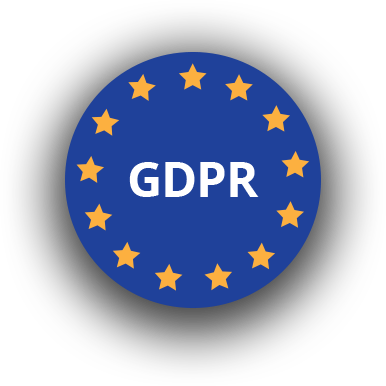
Meet GDPR Compliance With CurrentWare
The General Data Protection Regulation (GDPR) is a strict set of rules which regulate the privacy and security of personal data for citizens of the European Union. The so called digital privacy legislation of the EU has challenged businesses to implement technical and organizational measures that appropriately protect the personal data of customers. Businesses that have failed this challenge have faced stiff penalties, with over $126 million in fines being collected since its implementation in May of 2018.
The GDPR states that all businesses must ensure a “reasonable” level of protection for personal data. The types of personal data requiring adequate security include: IP addresses, cookie data and location data, home address, phone numbers, and Social Security Number.
And since the GDPR applies to any operation – regardless of its location – that collects the personal data of EU citizens, businesses around the world have been working to ensure GDPR compliance to avoid facing stiff fines and penalties.
The main factor that has necessitated the GDPR is the international threat of data breaches. Over the last decade, data breaches have impacted hundreds of millions of people and have affected even the largest corporations. And so, regardless of scale and industry, business leaders are leaning on technology and trained personnel to prevent a breach of personal data.
The Digital Privacy Legislation
Since its implementation in May of 2018, the General Data Protection Regulation (or the GDPR) has been regulating privacy and data protection within the European Union. Essentially, the GDPR provides individuals with control over their personal data while defining a set of rules that regulate the ways in which businesses process the personal information of individuals residing within the European Economic Area.
The regulation demands that all businesses – regardless of location – implement a system of technical and organizational measures that appropriately protect personal data. Considering that the scale and threats of a data breach vary across businesses and industries, the GDPR states that all businesses must provide a “reasonable” level of protection of data.
This means that every business must design data security processes and considering businesses vary in scale and the risks of a data breach differ drastically between industries, each business must design its processes with data security with its aim primarily on international business, the ways in which businesses and organizations within the European Union handle the data of consumers
How Does CurrentWare Facilitate GDPR Compliance?
CurrentWare is a suite of Internet and endpoint security software that prevents data breaches and facilitates GDPR compliance. Use BrowseControl, BrowseReporter, and AccessPatrol to secure the personal data of your customers.
With the personal data of customers being so sensitive in today’s climate, take the proactive approach and implement CurrentWare within your business to prevent a data breach before it affects your operation and reputation.

Content Filtering—Block Websites & Applications
Malware attacks are responsible for nearly 30% of all data breaches and 94% of malware is delivered by email.
Restrict Internet and application access of employees and enforce company web policies to prevent malware attacks and the illicit transfer of personal data.
- Block Websites: Block websites based on category, URL, domain, keyword, or IP address.
- Granular Policies: Customize internet restrictions for each user, device, or department.
- Block Applications: Prevent the launching of distracting or high-risk apps.

Computer Monitoring
—Application & Internet Usage
When a data breach is executed, it is the company’s responsibility under GDPR compliance to take every measure necessary to thoroughly investigate how the data was intercepted.
Investigate how your employees are browsing the web and what programs they are using while working with data. If a data breach does occur, quickly investigate the computer activity of employees to identify where the leak originated.
- Productivity Tracking: Get reports of each website and application used to see how your employees spend their time during the workday.
- Screenshot Monitoring: Capture high-resolution and compressed screenshots of your employees’ computer desktops.
- Track Software Usage: Get insights into what applications are being used and how much time is spent using them.

USB Control—Data Loss Prevention & Endpoint Security
A 2018 study from Ponemon Institute reports that 64% of all respondents say that their company experienced one or more endpoint attacks that successfully compromised data.
Control the ways in which personal data is stored, handled, and transferred by enforcing restrictions on company endpoints such as USBs and smartphones.
- USB Blocker: Easily block USBs, optical media, mobile devices, SD cards, and other removable media devices.
- DLP Controls: Prevent the transfer of data through USB flash drives, CDs, iPods, MP3s, FireWire, WiFi, and Bluetooth.
- USB Auditing: File operations reports track what files have been copied, created, deleted, or renamed on removable media devices.
